King’s Indian Defense: Complete Guide [Video Inside]
![King’s Indian Defense: Complete Guide [Video Inside]](https://thechessworld.com/wp-content/uploads/2024/05/kings-indian-defense-complete-guide.webp)
Kings Indian Defense (KID) is an opening for the fighter. It’s for the player with a never-give-up attitude who will fight for the full point from move 1. The greatest chess players of all time have graced this opening and have contributed immensely to its development. This is an opening that you will never get bored of. It has so many possibilities that you can vary your lines according to your needs and desires.
One of the main reasons that players go for the King’s Indian is that it is not only played in response to 1.d4, but you can also use it against 1.c4 and 1.Nf3.
You can play it against any opening other than 1.e4.
Win with King’s Indian Defense: Video Intro
As an amateur this is great news as the Kings Indian is a one-stop solution for anything other than 1.e4. The Kings Indian demands a lot from the player but the returns are equally rewarding.
In this article, we will cover the important variations of this opening and provide a complete guide for both sides.
King’s Indian Defense: An Overview
The starting position of the KID arises after the following moves:
- d4 Nf6 2. c4 g6 3. Nc3 Bg7 4. e4 d6
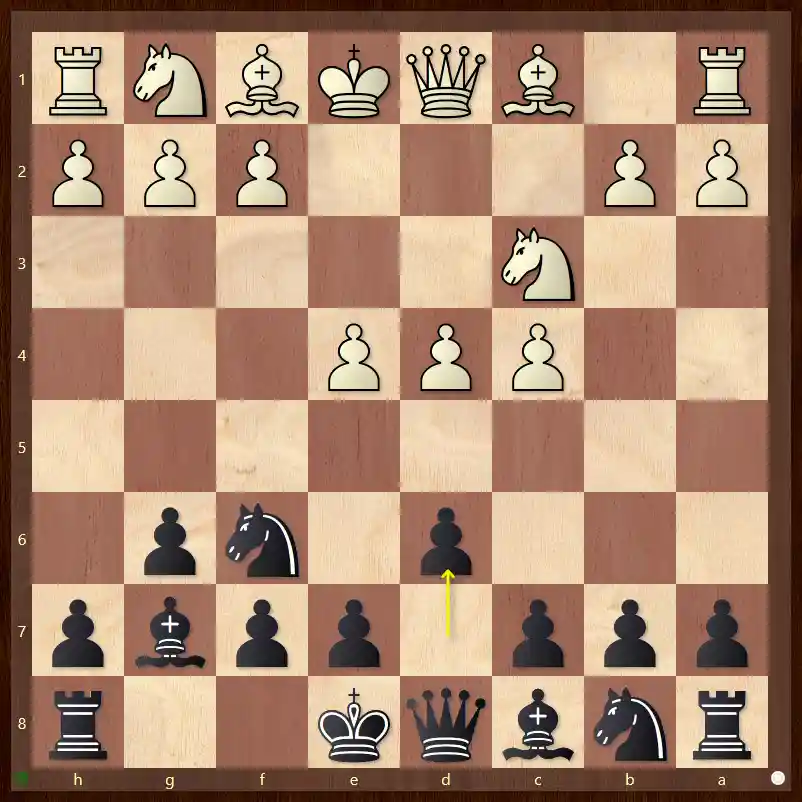
White constructs a large pawn center while Black calmly finishes development and castles the King to safety. The Kingside fianchetto structure is an integral part of the Kings Indian and the g7 Bishop plays an important role in many variations. It is a critical piece in the KID.
White’s dominance in the center is only temporary as Black will contest the center with the moves e7-e5 or c7-c5. What Black chooses depends on how White deploys his pieces in the center.
Classical Variation
- d4 Nf6 2. c4 g6 3. Nc3 Bg7 4. e4 d6 5. Nf3 O-O 6. Be2
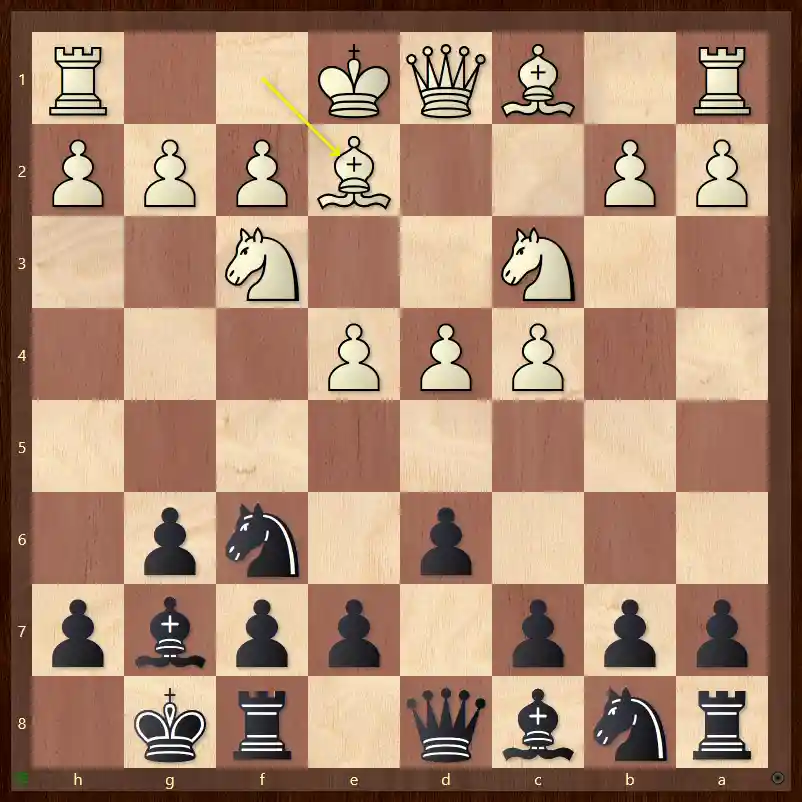
This is the starting position for the Classical Variation of the King’s Indian. White continues his development most straightforwardly, aiming to castle short and exploit his space advantage.
Now Black has to decide whether to challenge the center with …c7-c5 (either immediately or after …Bg4 and, possibly, …Nfd7) or …e7-e5.
6…e5 is the most popular move and the traditional main line. This is the theoretical battleground that every Kings Indian Player should be thoroughly prepared for. This line has so much history and so many ideas have been played that it necessary to look at many Kings Indian games to get a feel for this line.
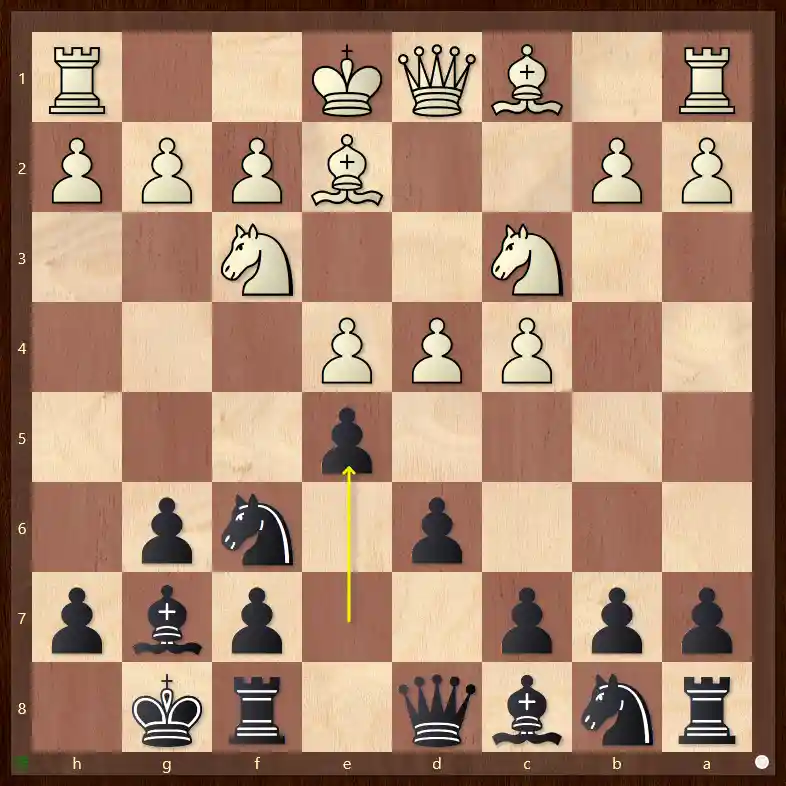
After 6..e5 White has multiple options:
7.dxe5 is the Exchange Variation, which isn’t any kind of theoretical problem for Black but can lead to quieter positions. It would be best if you were well prepared here, both theoretically and psychologically. This is because with this move White completely changes the nature of the game. KID players should be ready to shift gears at a moment’s notice and get ready for a long positional battle.
Model Game: A Mirzoev vs V Kovalev, 2016
7.d5 is the Petrosian Variation. This never reached the highest levels of popularity but it is often been used by very strong players as a surprise weapon.
Model Game: J Rowson vs G Jones, London 2015
7.Be3 is the Gligoric Variation. This is another line where you need thorough and latest opening knowledge.
Model Game: R Vazquez vs H Nakamura, Gibraltar 2016
7.0-0 leads to the Mar Del Plata Variation and is the most played variation by White. After castles, we play 7..Nc6. There are other creative tries here as well. For eg 7..Nbd7 and 7..Na6
8.d5 Ne7 and we reach the critical tabiya of this variation
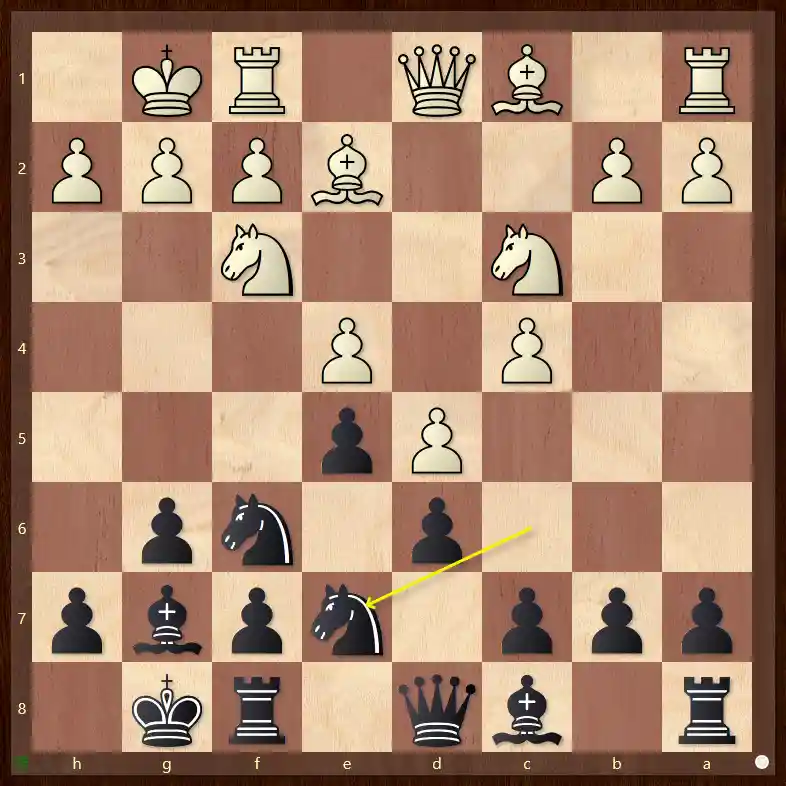
With the move 8.d5 White closes the center. This means the play will shift to the flanks.
White will play on the queenside and aim to achieve the c4-c5 break. This logical because White has more space on the Queenside. While Black has few defenders but many potential targets. For example, if White penetrates to c7 with a rook or a knight, Black’s position could become critical.
Black therefore needs to find counterplay, and the most reliable way of doing so is to aggressively play on the kingside. The standard idea is to play for f7-f5 followed by a Kingside pawn storm.
This is one of the few openings where this is a good plan for Black and one of the only openings after 1 d4 where White can get checkmated without making an obvious blunder.
This is one of the major reasons for players to choose the King’s Indian. However, we should not underestimate White’s play on the Queenside as this plan is dangerous if Black plays inaccurately.
The following game shows how both White and Black conduct their strategy in the middlegame. The takeaway theme from the game is the classic g3 pawn sacrifice by Black. This is a typical idea in this variation that Black uses to open lines on the Kingside.
Game 1: Mark Taimanov vs Miguel Najdorf, Zurich 1953
The next game features another standard idea in this variation. A piece sacrifice on g3 to open lines on the Kingside.
Game 2: Jeroen Piket vs Garry Kasparov, Tilburg 1989
Saemisch Variation
The Saemisch Variation lies at the heart of the King’s Indian. Most King’s Indian players have either started to play the KID or are spell-bounded by it after seeing a game in the Saemisch Variation.
- d4 Nf6 2. c4 g6 3. Nc3 Bg7 4. e4 d6 5. f3
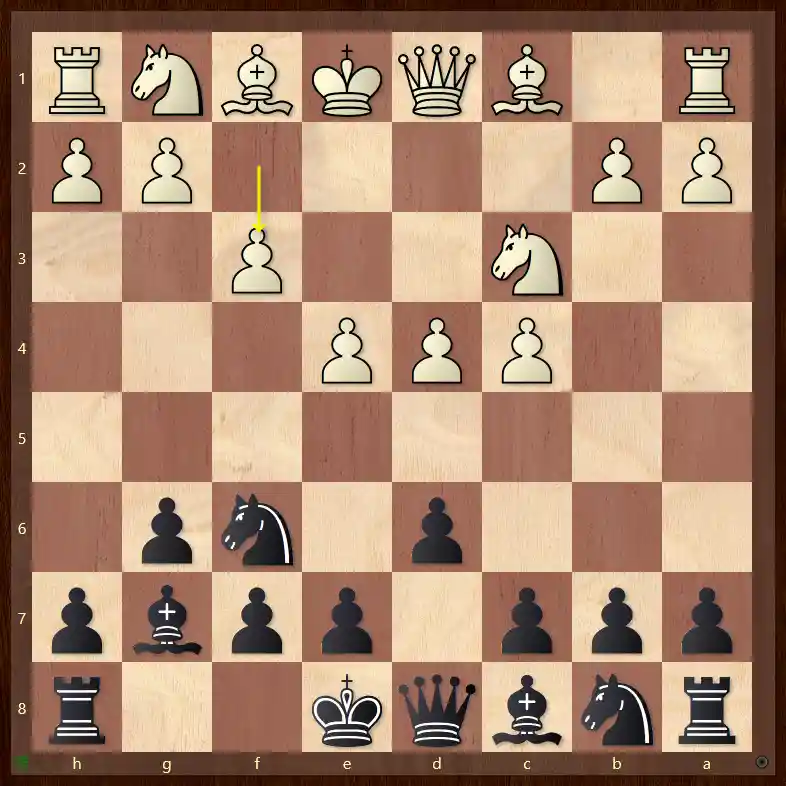
The move 5.f3 defends the e4 pawn and creates a secure and stable center. White’s idea is to use this stable center as a basis for launching a Kingside attack. Some typical moves that are played to create such an attack are Be3, Bg5 or Bh6, Qd2, g2-g4, and h2-h4.
However, White is not stuck to this plan only as you can use the stable center to launch a Queenside offensive as well.
Another typical advantage of the move f3 is that it takes away the g4 square from the f6 Knight, therefore the Bishop on c1 can freely develop to e3. The obvious negative consequence of the move f3 is that it takes away the natural f3 square from the g1 Knight.
Black has three main ways to combat the Saemsich:
- Black can strike in the center with c7-c5
Model Game: Belotti vs Piket, Lugano 1989
- Black can play Nc6, a6 and Rb8 with the idea to play b7-b5.
Model Game: Muir vs Fedorov, Batumi 1999
- Black can strike in the center with the move e7-e5
Model Game: A Kuzmin vs Sakaev, Doha 1993
Averbakh Variation
- c4 g6 2. d4 Nf6 3. Nc3 Bg7 4. e4 d6 5. Be2 O-O 6. Bg5
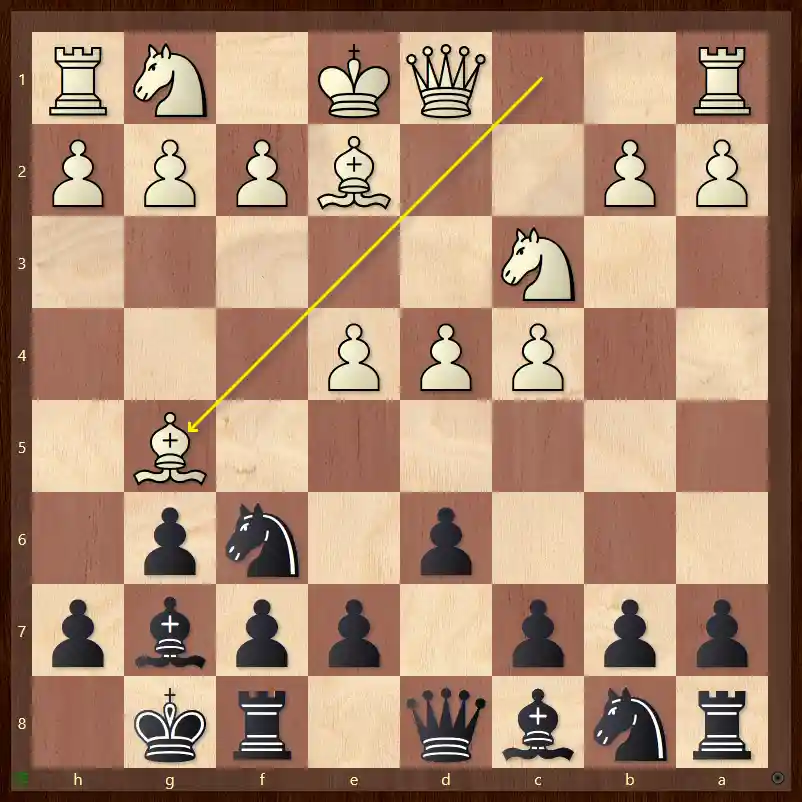
This enterprising move has one idea in mind. The move 6.Bg5 stops the typical e7-e5 advance. So how does Bg5 stop e5? After 7 dxe5 dxe5 8 Qxd8 Rxd8 9 Nd5 now Black cannot deal with both threats on f6 and c7.
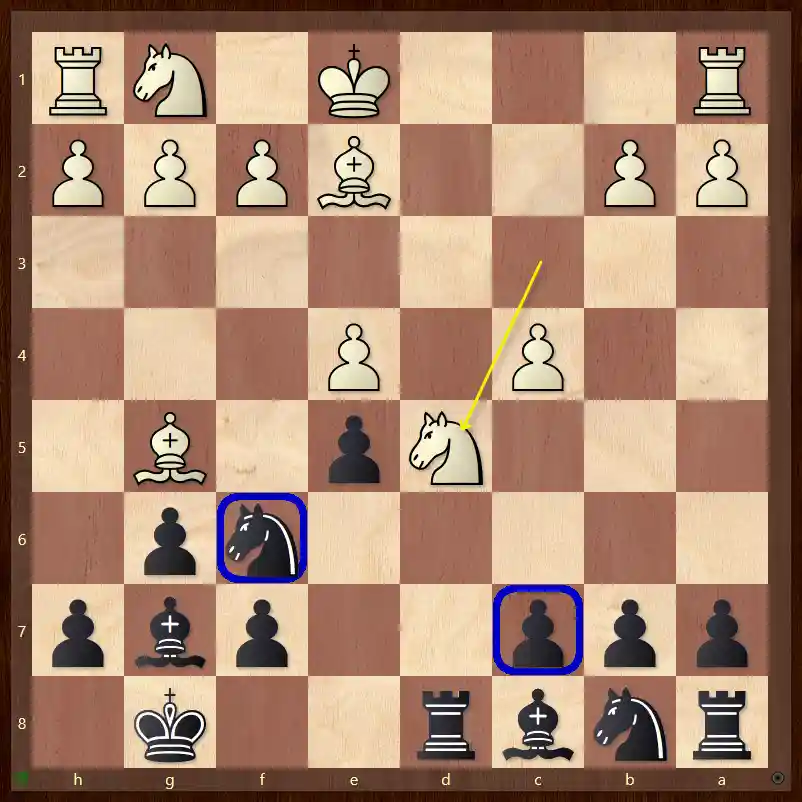
So if Black cannot go for e7-e5 then Black has to make a choice now. Should Black completely forgo the idea of e7-e5 and play for the c7-c5 break or should he prepare e7-e5 with moves like 6..h6, 6..Nbd7 or 6..Na6
White on the other hand will play d4-d5 in response to both an immediate c7-c5 or a prepared e7-e5 break. White can also take on c5 with dxc5.
Now you can see why White played an early Be2. After an eventual h6 by Black the Bishop will retreat to e3 and Be2 stops the knight from coming to g4 and further harassing the Bishop. Also by developing the Bishop instead of the Knight White can consider pushing the g and h pawns. White will hold the knight on g1 for the time being and choose an optimal spot for it after Black shows which plan he’s going for.
Game 1: Lev Alburt vs Garry Kasparov, Daugavpils 1978
Game 2: Magnus Carlsen vs Loek van Wely, Wijk Aan Zee 2013
Four Pawns Attack
The Four Pawns Attack is the most aggressive way for White to challenge the King’s Indian. If Black is not prepared then Black can easily lose without a fight.
1.d4 Nf6 2.c4 g6 3.Nc3 Bg7 4.e4 d6 5.f4
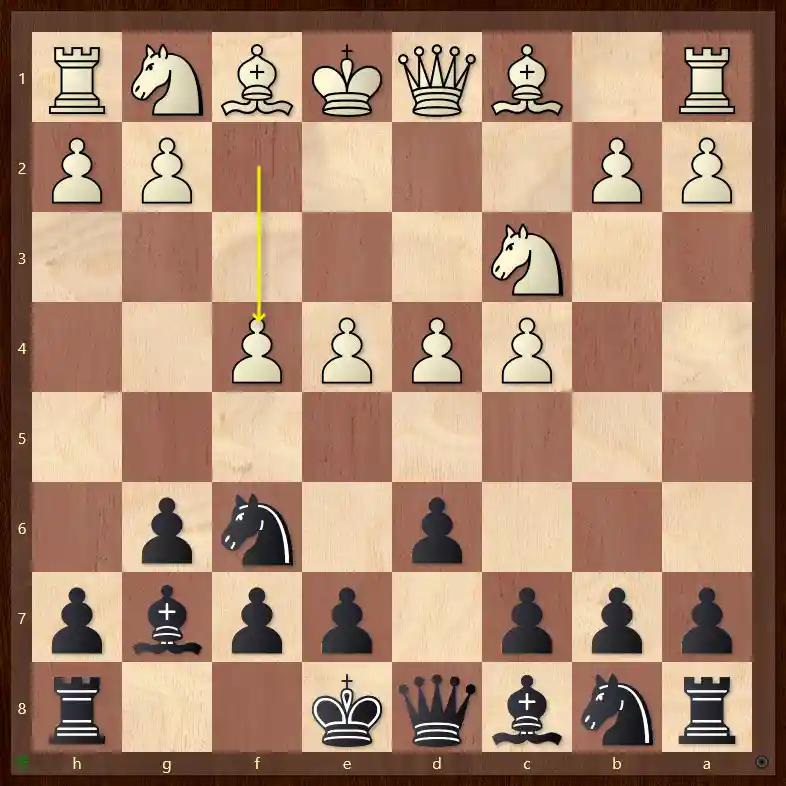
With the move 5.f4 White constructs an imposing center. Whites aim to advance e4-e5 at the right moment and slowly deprive space for the Black pieces.
So how can Black counter such a center? Black needs to counter in the center right away. The consequence of the move 5.f4 is that it is another pawn in the opening and this means that Black has a slight lead in development.
Therefore, by logic, Black must try to open the center immediately to take advantage of this. If Black succeeds in this strategy then White’s center becomes exposed and his center will crumble. But historically, it has been shown that it is not easy to destroy the center.
Black has two options to immediately contest the center. He can do so with either e7-e5 or c7-c5. The main line is the c7-c5 break. Black can also prepare the e7-e5 with Na6.
1.d4 Nf6 2.c4 g6 3.Nc3 Bg7 4.e4 d6 5.f4 0-0 6. Nf3 c5 7. d5 e6 8. Be2 exd5 9. cxd5
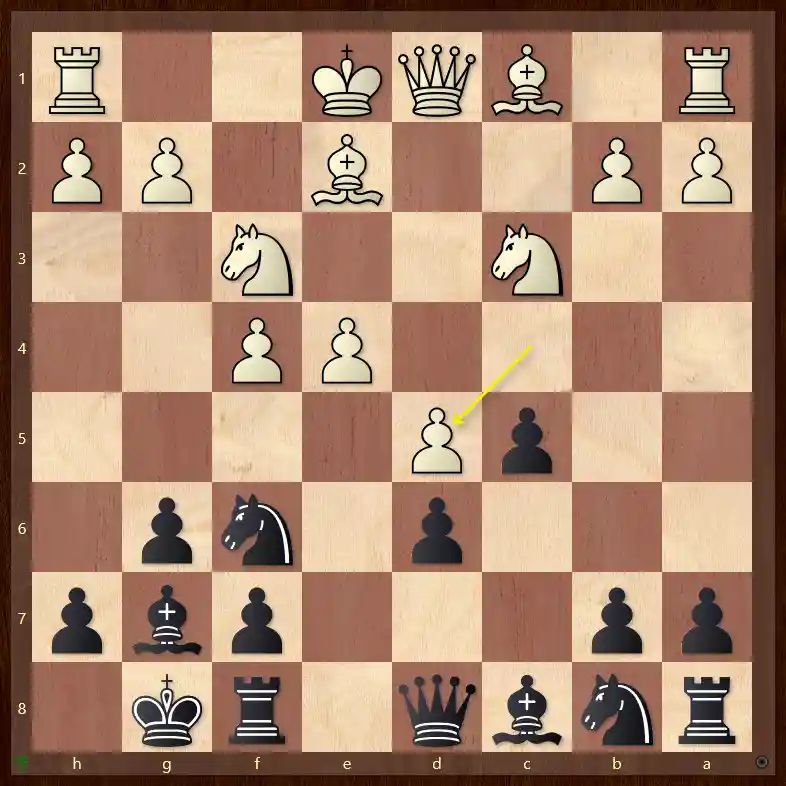
Now Black has three options: 9..Bg4, 9…Re8 and the dynamic 9…b5
The following games show the dynamic possibilities that both sides have in the Four Pawns Attack variation.
Game 1: Sergio Mariotti vs Svetozar Gligoric, 1969
In this game, White goes all out on the Kingside to checkmate Black. This is the Four Pawns Attack at its finest where a player uses an ultra-aggressive strategy to blow the opponent off the board.
Game 2: Larry Christiansen vs Garry Kasparov, Moscow 1982
Fianchetto Variation
In this variation, White opts for calm development with g3-Bg2 and 0-0. This is a solid line for White and Black cannot actively play using the usual methods in other variations.
1.d4 Nf6 2. c4 g6 3. g3 Bg7 4. Bg2 O-O 5.Nf3
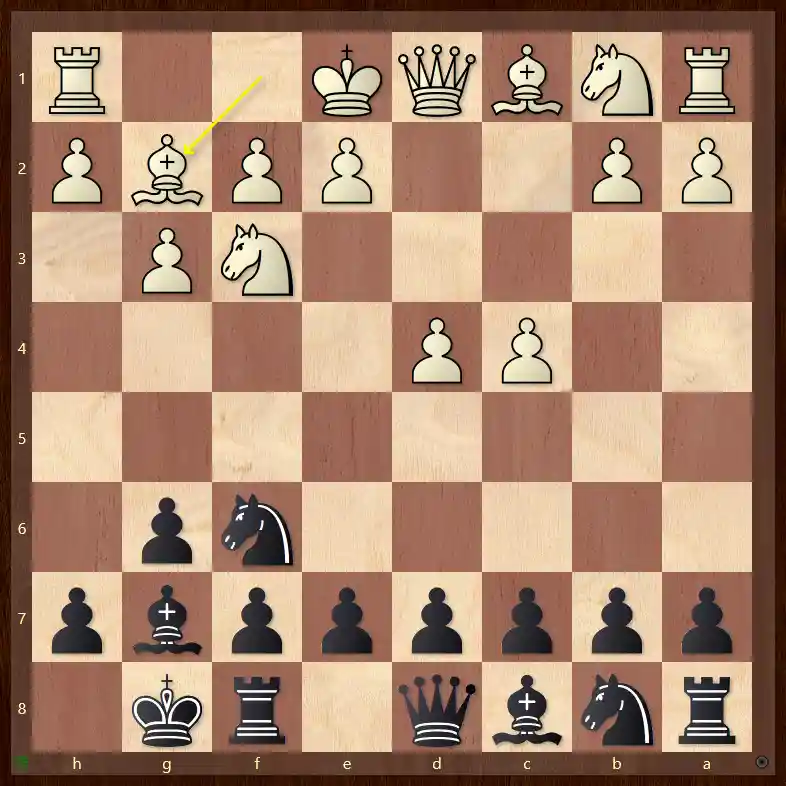
The stark difference is that the White has not played e2-e4. The plan of attacking the Kingside is also out of the question as White can go for central play whenever Black goes for a Kingside attack and the Bishop on g2 is an excellent defender of the Kingside.
So, White’s aim in this line is to reduce Black’s active play and slowly use his space advantage.
Black has a wide range of options against the Fianchetto variation.
- Transpose the game into a Benoni structure with a c7-c5 break
- Go for a Grunfeld with d7-d5
- Slav-Grunfeld Structure with c6 and d7-d5
- Maintain KID flavor with d7-d6
- Play for a quick e7-e5 with Nc6
You can try each one of them and choose what suits you. The Kings Indian is such a vast opening that each variation has multiple options for players of all styles. Only the Nimzo-Indian Defense can rive this opening in terms of flexibility.




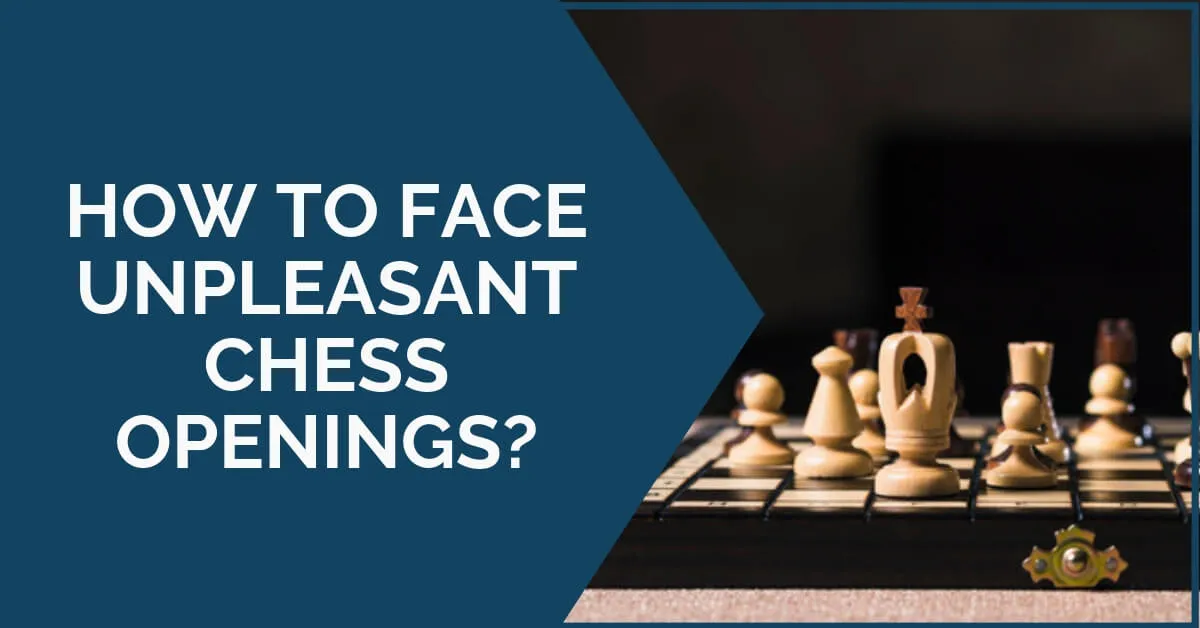
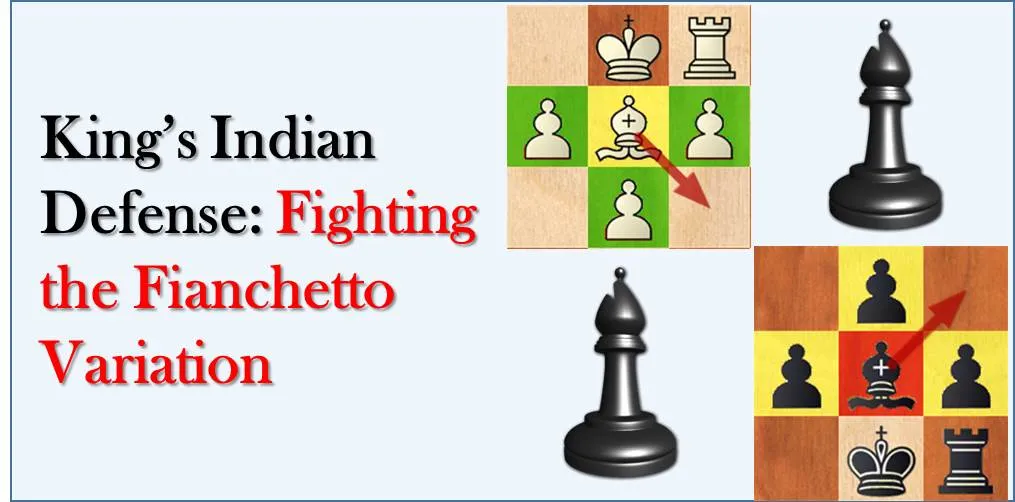




Comments: